Last Updated on September 16, 2022
So, your child’s school is closed for the summer. And you’re looking for new ways to keep him busy, right? Your little one’s a smarty, Mom! He loves to engage in equal learning and play, and don’t you love that about him? But wait, now that he’s home all day with you, how can you keep his smart little brain occupied? Let’s talk about keeping up his cognitive abilities, Mom and Dad! As you probably already know, cognitive skills are your ability to think, read, learn, remember, concentrate, reason, and pay attention. These skills come together to build the foundation of academic and work life. Now that you’re indoors all day with your child, take this opportunity to do these fun activities with him, and keep his brain engaged!
Thank you for reading this post, don't forget to subscribe!
1. Jiggle His Memory
Age group: 3 – 4, 4 – 6 years
Memory games are one of the simplest activities you can do with your child to help boost his visual memory skills, focus, and concentration.
How to do this:
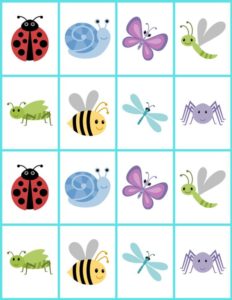
This is a game of matching. If you already have a set of cards for a memory matching activity, great! If not, you can create your own by doing the following:
- You can print two sets of 5 or 6 different objects, animals, vehicles, etc., and stick each one onto separate pieces of paper, or,
- You can draw two sets of these different objects onto separate pieces of paper. Then, lay these papers face down at random on a table. Ask your child to turn over a ‘card’. Then, keeping that card upright, ask him to choose another one that he thinks will be its matching card. If he chooses a card that does not match, both cards must be turned face down again. If the chosen card matches, then take the two cards and set them aside. Repeat this with your little one until all the cards are finished!
2. What is different?
Age group: 3 – 4 years, 4 – 6 years
You’ve seen games that involve spotting differences between two almost identical images, right? They’re actually quite engaging for young children! These games help enhance your little one’s ability to concentrate, pay attention, and recognize visual cues.
How to do this:
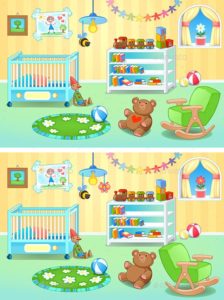
It’s quite simple! Find two images that are almost similar (there are plenty on the Internet), and present them to your child. Ask him to observe the images, and help him to spot the differences in the images (these can be differences in size, colour, etc.). Start with some simple ones, and move gradually on to more challenging images, as your child gets used to the game.
3. Make him a reader
Age group: 2 – 3, 3 – 4, 4 – 6 years
Reading is a wonderful activity that goes a long way to enhancing many of your child’s cognitive abilities like focus, concentration, paying attention, reasoning, and retaining information. As a bonus, it will also introduce him to plenty of new vocabulary!
How to do this:

Introduce your child to reading from a very young age. It’s said that you should start reading to your child in the womb! For younger children (2 to 4 years old), make sure that their books have plenty of colourful visuals, to draw their attention and keep them interested. As your child gets older, his books can have fewer pictures, but they must be engaging, so that he will have a continued interest in picking up and reading books on his own. Also, it’s best to read with your child, so that you can help him out with new words (their meanings and pronunciations), and relate words with pictures.
4. Bead Away!
Age group: 3 – 4, 4 – 6 years
Sorting and organizing activities like threading beads are simple and lovely, as they greatly help to increase your little one’s attention, concentration, and reasoning skills.
How to do this:
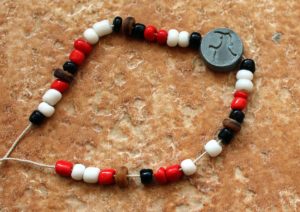
Gather beads of different shapes, sizes, and colours. For younger children (3 to 4 years), you can ask them to sort out the beads based on their size (big, medium, small), shape (circular, square, triangular, etc.), and colour (reds, pinks, blues, greens, etc.). Then, you can ask them to thread a simple, repetitive pattern of beads (eg: red bead, blue bead, green bead, red bead, blue bead, green bead, and so on). For older children (4 to 6 years old), you can ask them to sort out the beads, and then give them a more challenging pattern to thread, involving all the shapes, sizes and colours.
5. Join The Dots
Age group: 3 – 4, 4 – 6 years
Joining dots to create pictures is a very enjoyable activity! It increases your child’s ability to pay attention, concentrate, reason, and follow along a path of information (literally!)
How to do this:
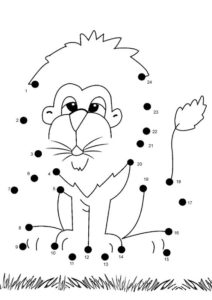
You can either find a book that contains join-the-dots puzzles, or download them from the Internet, or even create them yourself. Number the dots (1, 2, 3…) or give them alphabets (A, B, C…), so that your child can follow their path and find it easier to join the dots that way. This way, he also gets better at his numbers and letters! Help him out with the joining of lines, and encourage him to remember the next number/alphabet as he goes on.
6. Make Your Way Through A Maze
Age group: 3 – 4 years, 4 – 6 years
Solving maze puzzles is an interesting challenge for your child, and it can greatly enhance his focus, attention, and reasoning skills.
How to do this:
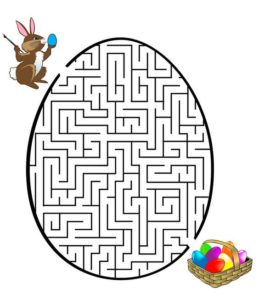
You can either get a maze puzzle book for him, or download different mazes from the Internet, or even create one yourself! Start with simple ones (especially for younger children), help your little one navigate the obstacles of the mazes, and gradually increase complexity of the puzzles to make it a challenging and fun hobby.
7. Work Out These Words!
Age group: 4 – 6 years
Word jumbles are excellent activities that help boost your little one’s concentration, attention span, memory, and reasoning.
How to do this:

You can use word jumble books, or download jumbles off the Internet, or create them yourself. Try to keep the jumbles themed, like animal names, food items, colours, vehicles, etc. To make it more personalized, jumble the names of family members, his friends, or favourite cartoon characters. And remember to give him a few hints to help him along, if he gets stuck!
Don’t these seem fun and challenging, Mom and Dad? Maybe you even want to try them out for yourself, just for fun!











